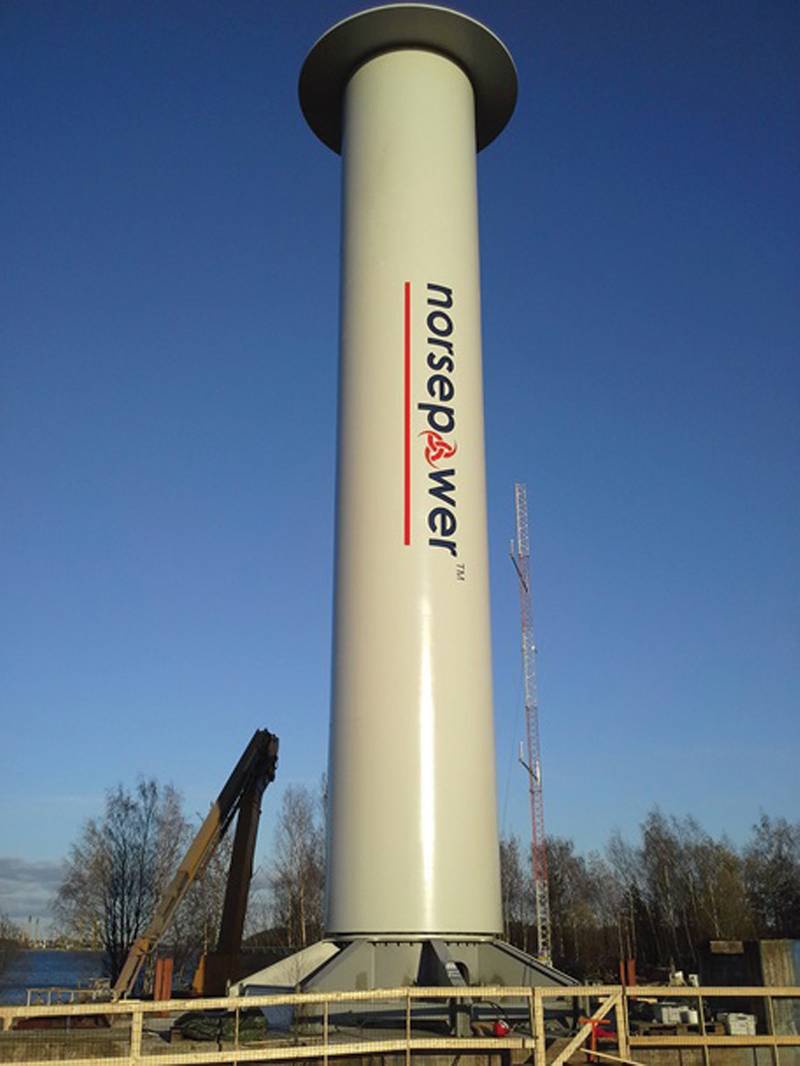
Models of this type are general and can be applied to any site. Another approach to siting a small turbine is to use a shelter model to predict how nearby obstacles will affect local wind conditions.

Measurements made in a boundary layer wind tunnel have indicated that significant detrimental effects associated with nearby obstacles can extend up to 80 times the obstacle's height downwind. Better locations for wind turbines are far away from large upwind obstacles. One rule of thumb is that turbines should be at least 9 m (30 ft) higher than anything within 150 m (490 ft). Turbines are often mounted on a tower to raise them above any nearby obstacles. This speed is typically around 4 metres per second (8.9 mph), although some small wind turbines can be designed to work at lower wind speeds. Small wind turbines require a minimum wind speed to start generating, called the cut-in speed. A hinged design allows easy lowering for maintenance. Wind turbines small enough to be held by a single steel pipe are often secured with scaffold base plate mounted to a concrete foundation. Hemp, flax, wood and bamboo are all candidate blade materials for small turbines.

Ongoing materials developments include bamboo laminates using resins and hybrid bamboo carbon-fiber materials. Furthermore, relative to wood, bamboo has higher fracture toughness, higher strength, lower processing costs and fast growth rate. Beyond wood, bamboo-based composites may also be used in both large and small wind turbines due to their low density and carbon sequestration ability-which makes bamboo materials environmentally friendly. Nepal has used small blade turbines made of coated timber including Sal, Saur, Sisau, Uttish, Tuni, Okhar, pine, and lakuri wood. Sitka spruce (used in propellers), and Douglas Fir have been used in turbine blades. Coatings are generally used to reduce moisture, and white enamel with primer has been found to be particularly effective. Wood can be used, and the type of wood should be chosen based on availability, cost and growth time, average density, high stiffness, and breaking strain.

Although natural fibers are susceptible to quality variations, high moisture uptake and low thermal stability that make them undesirable for larger blades, small turbines can still take advantage of them.
HOME WIND TURBINE SYSTEMS FULL
Full mounting sets called "tower kits" are available.Ī range of synthetic materials including carbon fiber reinforced polymers, nanocomposites, and E-glass-polyester are available. Ground mounted small wind turbines are typically supported by four guy-wire, and a gin pole used to raise and lower the tower. A high lift-to-drag ratio will generally increase efficiency as well. This should be kept at an optimal point of efficiency. The ratio between the speed of the blade tips and the speed of the wind is called the tip speed ratio. In some situations, vertical axis wind turbines have operational advantages in maintenance and placement due to their simplicity, however VAWTs are less reliable than HAWTs and less efficient at converting wind to electricity. The majority of small wind turbines are traditional horizontal-axis wind turbines.

Smaller scale turbine blades are usually 1.5 to 3.5 metres (4 ft 11 in – 11 ft 6 in) in diameter and produce 0.5-10 kW of electricity at their optimal wind speed.


 0 kommentar(er)
0 kommentar(er)
